For the first time in 27 years, Stanford did not finish atop the standings. In a COVID-19 season, that’s not a coincidence.
The longest winning streak in college athletics is over. The immovable object has been moved from the mountaintop. And this momentous happening may say a lot about who the COVID-19 pandemic most substantially affected.
On Friday, the Learfield IMG Directors’ Cup standings for the 2020–21 academic year were released. For the first time in 27 years, a school other than Stanford was the top overall athletic program in America. That school is Texas, powered by three national championships and several other top-five finishes. The Cardinal didn’t drop far, finishing No. 2 and just 56.25 points behind the Longhorns, but their domination had become so routine that this registers as a shock.
“It’s been a while since somebody else won one,” says Big 12 commissioner Bob Bowlsby, himself a former Stanford athletic director. In fact, the only other school to have won the Directors’ Cup since it began in 1993–94 is North Carolina, which claimed the inaugural one.
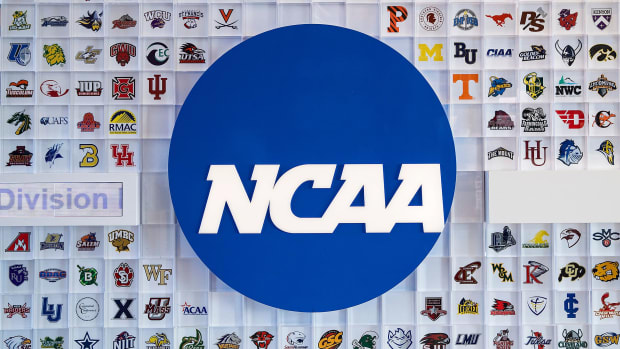
The rise of Texas and the slippage by Stanford are snapshots of the two strongest trends in Power 5 athletics during the pandemic year: The Big 12 surged and the Pac-12 struggled. Compared to the previous five-year average finish in the Directors’ Cup, Big 12 schools moved up an average of 3.4 spots among Power 5 programs, with six members improving over their previous average, three declining and one staying even. The Pac-12, meanwhile, was a mirror opposite: Its schools averaged losing 3.4 spots, with eight declining, three rising and one staying even.
(The Directors’ Cup formula, which is computed and maintained by the National Association of Collegiate Directors of Athletics, ranks every school on national finish in 19 sports, four of which are mandatory counters: men’s and women’s basketball, baseball and women’s volleyball. For schools with more than 19 sports, the remaining best 15 are used.)
Broad strokes reaction to those developments: One league is anchored in California and the other is in Texas, and those two states took very different approaches to living through—and playing sports in—a pandemic. And if you’re into winning, the Texas way was the winning way. Of the four Texas schools in the Big 12, three (Texas, Baylor and TCU) improved their standing over their 2015–19 average ranking in the Directors’ Cup, while Texas Tech stayed even. Of the four California schools in the Pac-12, all tumbled in the rankings.
No conference started play in 2020–21 more cautiously than the Pac-12, with its football season kicking off on Nov. 7. The Big 12, after becoming the Power 5 swing vote that kept the 2020 season alive by deciding to play in the fall, began competing in football on Sept. 12 and had relatively few player opt-outs. By and large, it also had its other sports engaged in on-campus, organized practices far earlier than the Pac-12 schools.
“I don’t consider us to have taken risks,” Bowlsby says. “We made prudent decisions and went forward when we could.”
California was the first state to issue a mandatory stay-at-home order, whereas many Texans resisted efforts at a lockdown. Most of the universities in those states reflected that general approach. “It would be too simple to say it’s a red-state, blue-state thing, but it’s pretty clear that those who played more fared better,” Bowlsby says.
Indeed, while it doesn’t explain everything, it’s worth noting that five of the six states in the Pac-12 footprint went for Joe Biden in the 2020 presidential election, and all five of the Big 12 states went for Donald Trump.
Beyond the Big 12, four other Texas schools were in the Directors’ Cup top 100: Texas A&M, Sam Houston State, Houston and Rice. While a total of eight from the Lone Star State in the top 100 is two more than each of the previous two seasons, it should be noted that the Aggies actually fell 10 spots compared to their 2015–19 average finish.
(Texas A&M’s outlier season is an example that this is not such an easily reduced formula. So is the state of Alabama, where the Crimson Tide rose 20 spots while Auburn dropped 19. In both normal and abnormal times, there are many factors that impact on-field success within broad-based athletic programs.)
Texas athletic director Chris Del Conte was magnanimous in victory, crediting previous Longhorns administrators for building the foundation of what he took over in December 2017. He also noted that Stanford “had a stranglehold on this thing” for more than a quarter century. But Texas certainly maximized its opportunities, winning a competition that scores 19 varsity programs while only fielding 20—that’s 16 fewer programs than Stanford.
“Our goal is to be a top 10 team in every program,” Del Conte says. “We chose to be excellent in everything we do. We’ve been close, knocking on the doorstep, and this year just happened to be one of those years where everything fell into place.”
While Texas might have had an advantage in terms of an earlier 2020 commitment to playing sports, it hardly had a quiet academic year. Racial turmoil affected the campus and its alumni base, with a firestorm erupting over the “Eyes of Texas” song and its role at athletic contests—especially football.
“There was so much noise around us,” Del Conte says. “We just buckled down, and our kids did a wonderful job of controlling what they could control. They just blocked out the noise and went to work.”
Del Conte says he sensed the momentum building throughout the year when visiting “The TANC,” which is the school’s athletic nutrition center, where athletes from all sports mingle at meal time. Throughout the second semester, success built upon itself. Men’s swimming won its national title in March; women’s volleyball made the championship match in April; women’s tennis and rowing followed with nattys in May; and the baseball team made the final four of the College World Series in June.
Out west, the drops in performance were precipitous despite the Conference of Champions living up to its nickname with eight national titles. Cal was the biggest faller, dropping 25 places and scoring 36% fewer points than its previous two-year average (NACDA changed its scoring formula in 2018). Colorado was down 26%, Washington State 25%, UCLA 22%, Washington 18%, Utah 14%.
And then there was mighty Stanford, down 19%. The Cardinal still won two titles, in women’s basketball and men’s gymnastics, and athletic director Bernard Muir expressed gratitude that there was a season of any kind.
“We weren’t sure we were going to even play sports,” Muir says. “We were on a different plan in the Pac-12, and a different set of circumstances, and the first thing was the safety of all our student-athletes. We really didn’t get out of the gate until January [when 35 of the 38 varsity sports began organized training on campus, while football and both basketball programs previously spent weeks on the road outside the state so they could compete].”
Muir noted that the Cardinal could still win one or both elements of the Capital One Cup, a different all-sports ranking that is divided by gender and has yet to announce its final results. Stanford currently is first in the women’s rankings and second in the men’s. “To even be in the hunt for that, and for the Directors’ Cup down the stretch, we’re pretty proud of that,” he says.
With an expectation of a return to near-normalcy on campus for the 2021–22 academic year, Stanford may be ready to reclaim the throne it occupied continuously since the first Clinton administration. But for one year, at least, it seems pretty clear that the pandemic played a major role in deciding the collegiate all-sports champion of America.
Below is information for every Power 5 team, by conference, on how their Directors' Cup standing changed in 2020–21.
Directors' Cup Data by Team
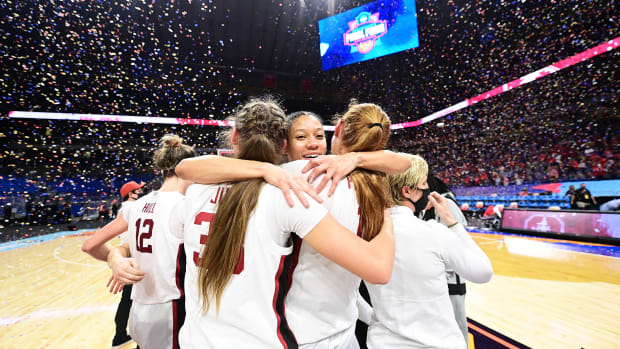
Pac-12
Stanford
Five-year average: 1st
2020-21 finish: 2nd
Ranking change: –1
Best sports: Women’s basketball, men’s gymnastics (national champions)
USC
Five-year average: 3rd
2020–21 finish: 6th
Ranking change: -3
Best sports: Women’s track and field, women’s water polo, beach volleyball (national champions)
UCLA
Five-year average: 4th
2020–21 finish: 13th
Ranking change: -9
Best sport: Men’s water polo (national champion)
California
Five-year average: 15th
2020–21 finish: 40th (tied)
Ranking change: -25
Best sport: Men’s swimming
Oregon
Five-year average: 16th
2020–21 finish: 25th
Ranking change: -9
Best sport: Men’s indoor track and field (national champion)
Washington
Five-year average: 24th
2020–21 finish: 33rd
Ranking change: -9
Best sports: Women’s volleyball, women’s rowing
Arizona State
Five-year average: 32nd
2020–21 finish: 20th
Ranking change: +12
Best sports: Men’s golf, women’s water polo
Arizona
Five-year average: 36th
2020–21 finish: 27th
Ranking change: +9
Best sport: Women’s basketball
Colorado
Five-year average: 41st
2020–21 finish: 52nd
Ranking change: -11
Best sport: Skiing
Utah
Five-year average: 57th
2020–21 finish: 60th
Ranking change: -3
Best sport: Skiing (national champion)
Oregon State
Five-year average: 59th
2020–21 finish: 52nd
Ranking change: +7
Best sport: Men’s basketball
Washington State
Five-year average: 64th
2020–21 finish: 64th
Ranking change: None
Best sport: Women’s volleyball
Pac-12
Total net: -41
Average: -3.4
Decliners: 8
Risers: 3
Even: 1

SEC
Florida
Five-year average: 2nd
2020–21 finish: 5th
Ranking change: -3
Best sport: Men’s tennis (national champion)
Texas A&M
Five-year average: 12th
2020–21 finish: 18th
Ranking change: -6
Best sport: Women’s track and field
Georgia
Five-year average: 13th
2020–21 finish: 10th
Ranking change: +3
Best sports: Women’s outdoor track and field, men’s indoor track and field
Kentucky
Five-year average: 16th (tie)
2020–21 finish: 12th
Ranking change: +4
Best sports: Rifle, women’s volleyball (national champions)
LSU
Five-year average: 18th
2020–21 finish: 15th
Ranking change: +3
Best sport: Men’s track and field (national champion)
Arkansas
Five-year average: 20th
2020-21 finish: 8th
Ranking change: +12
Best sport: Women’s indoor track and field (national champion)
Alabama
Five-year average: 27th
2020–21 finish: 7th
Ranking change: +20
Best sport: Football (national champion)
South Carolina
Five-year average: 28th
2020–21 finish: 41st
Ranking change: -13
Best sport: Women’s basketball
Auburn
Five-year average: 30th
2020–21 finish: 49th
Ranking change: -19
Best sport: Women’s golf
Tennessee
Five-year average: 32nd
2020–21 finish: 25th
Ranking change: +7
Best sport: Men’s tennis
Missouri
Five-year average: 37th (tie)
2020–21 finish: 47th
Ranking change: -10
Best sport: Wrestling
Mississippi State
Five-year average: 44th
2020–21 finish: 54th
Ranking change: -10
Best sport: Baseball (national champion)
Mississippi
Five-year average: 49th
2020–21 finish: 21st
Ranking change: +28
Best sport: Women’s golf (national champion)
Vanderbilt
Five-year average: 52nd
2020–21 finish: 53rd
Ranking change: -1
Best sport: Baseball
SEC
Total net: +15
Average: +1.1
Decliners: 7
Risers: 7
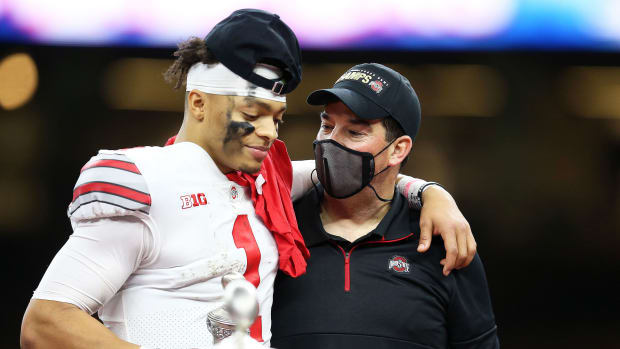
Big Ten
Ohio State
Five-year average: 5th
2020–21 finish: 9th
Ranking change: -4
Best sport: Football
Michigan
Five-year average: 7th
2020–21 finish: 3rd
Ranking change: +4
Best sport: Women’s gymnastics (national champion)
Penn State
Five-year average: 9th
2020–21 finish: 38th
Ranking change: -29
Best sports: Fencing, wrestling
Wisconsin
Five-year average: 21st
2020–21 finish: 36th
Ranking change: -15
Best sport: Women’s ice hockey (national champion)
Minnesota
Five-year average: 23rd (tie)
2020–21 finish: 27th
Ranking change: -4
Best sport: Men’s gymnastics
Nebraska
Five-year average: 36th
2020–21 finish: 34th
Ranking change: +2
Best sport: Women’s bowling (national champion)
Illinois
Five-year average: 37th (tie)
2020–21 finish: 46th
Ranking change: -9
Best sport: Men’s golf
Northwestern
Five-year average: 41st
2020–21 finish: 30th
Ranking change: +11
Best sport: Women’s lacrosse.
Indiana
Five-year average: 43rd
2020–21 finish: 33rd
Ranking change: +10
Best sport: Men’s soccer
Maryland
Five-year average: 45th
2020–21 finish: 45th
Ranking change: Even
Best sport: Men’s lacrosse
Michigan State
Five-year average: 47th
2020–21 finish: 56th
Ranking change: -9
Best sport: Women’s cross country
Purdue
Five-year average: 48th
2020–21 finish: 59th
Ranking change: -11
Best sport: Women’s volleyball
Iowa
Five-year average: 50th
2020–21 finish: 29th
Ranking change: +21
Best sport: Wrestling (national champion)
Rutgers
Five-year average: 63rd
2020–21 finish: 55th
Ranking change: +8
Best sport: Women’s rowing
Big Ten
Total net: -25
Average: -1.8
Decliners: 7
Risers: 6
Even: 1
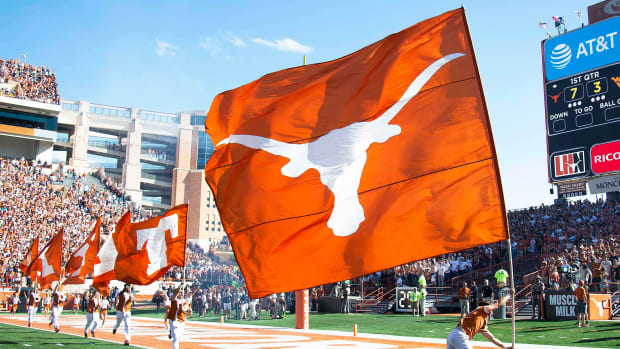
Big 12
Texas
Five-year average: 6th
2020–21 finish: 1st
Ranking change: +5
Best sports: Women’s rowing, women’s tennis, men’s swimming (national champions)
Oklahoma
Five-year average: 22nd
2020–21 finish: 23rd
Ranking change: -1
Best sport: Softball (national champion)
Oklahoma State
Five-year average: 25th
2020–21 finish: 17th
Ranking change: +8
Best sport: Women’s golf
Baylor
Five-year average: 33rd
2020–21 finish: 28th
Ranking change: +5
Best sport: Men’s basketball (national champion)
Texas Tech
Five-year average: 42nd
2020–21 finish: 42nd
Ranking change: Even
Best sport: Baseball
TCU
Five-year average: 46th
2020–21 finish: 44th
Ranking change: +2
Best sport: Rifle
Iowa State
Five-year average: 54th
2020–21 finish: 37th
Ranking change: +17
Best sport: Football
West Virginia
Five-year average: 55th
2020–21 finish: 48th
Ranking change: +7
Best sport: Rifle
Kansas
Five-year average: 58th
2020-21 finish: 63rd
Ranking change: -5
Best sport: Men’s basketball
Kansas State
Five-year average: 61st
2020–21 finish: 65th
Ranking change: -4
Best sport: Men’s indoor track and field
Big 12
Total net: +34
Average: +3.4
Decliners: 3
Risers: 6
Even: 1
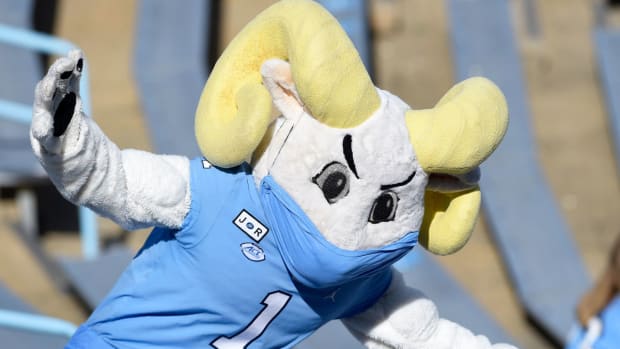
ACC
North Carolina
Five-year average: 8th
2020–21 finish: 4th
Ranking change: +4
Best sport: Women’s field hockey (national champions)
Virginia
Five-year average: 10th (tie)
2020–21 finish: 11th
Ranking change: -1
Best sports: Men’s lacrosse, women’s swimming (national champions)
Florida State
Five-year average: 10th (tie)
2020–21 finish: 16th
Ranking change: -6
Best sports: Softball, women’s soccer
Notre Dame
Five-year average: 16th (tie)
2020–21 finish: 14th
Ranking change: +2
Best sport: Fencing (national champion)
Duke
Five-year average: 19th
2020–21 finish: 20th
Ranking change: -1
Best sport: Fencing
NC State
Five-year average: 26th
2020–21 finish: 22nd
Ranking change: +4
Best sport: Women’s swimming, women’s cross country
Louisville
Five-year average: 29th
2020–21 finish: 39th (tie)
Ranking change: -10
Best sport: Field hockey
Virginia Tech
Five-year average: 34th
2020–21 finish: 31st
Ranking change: +3
Best sports: Softball, men’s soccer
Syracuse
Five-year average: 40th
2020–21 finish: 58th
Ranking change: -18
Best sport: Women’s lacrosse
Miami
Five-year average: 51st
2020–21 finish: 57th
Ranking change: -6
Best sport: Women’s track and field
Clemson
Five-year average: 53rd
2020–21 finish: 37th
Ranking change: +18
Best sport: Football
Wake Forest
Five-year average: 56th
2020–21 finish: 51st
Ranking change: +5
Best sport: Men’s soccer
Boston College
Five-year average: 60th
2020–21 finish: 62nd
Ranking change: -2
Best sport: Women’s lacrosse (national champion)
Georgia Tech
Five-year average: 62nd
2020–21 finish: 43rd
Ranking change: +19
Best sport: Women’s basketball, women’s tennis
Pittsburgh
Five-year average: 65th
2020–21 finish: 61st
Ranking change: +4
Best sport: Men’s soccer
ACC
Total net: +15
Average: +1
Decliners: 7
Risers: 8
Biggest overall risers
Mississippi +28
Iowa +21
Alabama +20
Georgia Tech +19
Clemson +18
Biggest overall decliners
Penn State -29
California -25
Auburn -19
Syracuse -18
South Carolina -13
Non-Power 5 national champions:
Pepperdine men’s golf
Hawaii men’s volleyball
Massachusetts men’s ice hockey
BYU women’s cross country
Northern Arizona men’s cross country
Santa Clara women’s soccer
Marshall men’s soccer